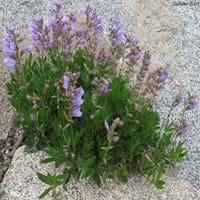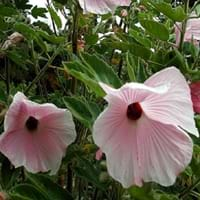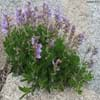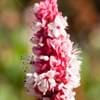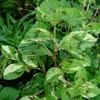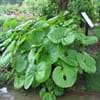Life Span
Perennial
Annual and Perennial
Type
Perennial, Shrub
Flowering Plants, Ornamental Plants, Shrub, Tree
Origin
Northwestern United States, Canada
Eastern Australia
Types
sharpleaf penstemon, white-margined beardtongue, lowland beardtongue
Not Available
Number of Varieties
Not Available
Habitat
foothill woods, High elevation, Open areas, Rocky areas
gardens, Grassland, Homesteads, Subtropical climates, tropical environments
USDA Hardiness Zone
4-9
9-15
AHS Heat Zone
9-1
Not Available
Sunset Zone
1a, 1b, 2a, 2b, 3a, 3b, 4, 5, 6, 7, 14, 15
21,22
Habit
Mat-forming
Oval or Rounded
Flower Color
Purple
Light Pink, Not Available, Pink
Flower Color Modifier
Bicolor
Bicolor
Fruit Color
Brown
Not Available
Leaf Color in Spring
Dark Green
Green, Light Green, Not Available
Leaf Color in Summer
Dark Green
Green, Not Available
Leaf Color in Fall
Dark Green
Green, Light Green, Not Available
Leaf Color in Winter
Dark Green
Light Green
Leaf Shape
Narrow and lance shape
Heart shaped, toothed with three to five lobes
Plant Season
Spring, Summer, Fall, Winter
Spring, Summer, Fall, Winter
Sunlight
Full Sun, Partial Sun
Full Sun, Partial Sun
Type of Soil
Loam, Sand
Loam
The pH of Soil
Acidic, Neutral
Neutral
Soil Drainage
Well drained
Well drained
Bloom Time
Late Spring, Early Summer
Early Summer, Summer, Late Summer, Early Fall, Fall, Indeterminate
Tolerances
Drought
Drought, Variety of soil types
Where to Plant?
Ground
Ground, Pot
How to Plant?
Seedlings
Stem Cutting, Tip cutting, Vegetative Reproduction
Plant Maintenance
Medium
Medium
Watering Requirements
Needs less watering, Requires regular watering, Water occasionally
It cannot sustain wet-feet, Keep the Soil well drained, Requires watering in the growing season, Water Deeply, Water frequently while growing, Water more in summer, Water when soil is dry
In Summer
Lots of watering
Lots of watering
In Spring
Moderate
Moderate
In Winter
Average Water
Average Water
Soil pH
Acidic, Neutral
Neutral
Soil Type
Loam, Sand
Loam
Soil Drainage Capacity
Well drained
Well drained
Sun Exposure
Full Sun, Partial Sun
Full Sun, Partial Sun
Pruning
Remove damaged leaves, Remove dead branches, Remove dead leaves
A hard prune may be necessary if the plant becomes woody, Cut leaves after fall, Cut or pinch the stems, Pinch or prune as they grow to promote branching and bushiness, Prune for shortening long shoots, Prune in early summer, Remove deadheads
Fertilizers
All-Purpose Liquid Fertilizer
Apply 10-10-10 amount, Balanced liquid fertilizer, Do not fertilize new plants until at least a month, Use a low phosphate fertilizer to improve the quality of the blooms
Pests and Diseases
Red blotch
Aphids, Mealybugs, Red spider mite, Scale, Thripes, Whiteflies
Plant Tolerance
Drought
Drought, Variety of soil types
Flower Petal Number
Single
Single
Foliage Texture
Fine
Medium
Foliage Sheen
Glossy
Glossy
Attracts
Hummingbirds, Butterflies
Bees, Butterflies, Hummingbirds
Allergy
Asthma, Pollen
no allergic reactions
Aesthetic Uses
Cottage Garden, Showy Purposes
Beautification, Borders, Landscape Designing
Beauty Benefits
Not Available
Hair Conditioner, Not Available, Prevents greying of hair, Prevents Premature Baldness, Promotes Healthy Hair, Promotes healthy skin, Speed hair growth
Environmental Uses
Air purification, Wildlife
Air purification
Medicinal Uses
Recovering internal injuries, Wounds
anti-inflammatory, Diuretic, Hair Loss, High blood pressure, Vitamin C
Part of Plant Used
Flowers
Flowers, Leaf Stalks, Leaves
Other Uses
Container, Used as Ornamental plant, Veterinarian uses
Showy Purposes, Used as Ornamental plant
Used As Indoor Plant
No
No
Used As Outdoor Plant
Yes
Yes
Garden Design
Alpine, Container, Mixed Border, Rock Garden / Wall, Wildflower
Container, Foundation, Houseplant, Mixed Border, Tropical
Botanical Name
PENSTEMON fruticosus 'Purple Haze'
Hibiscus splendens
Common Name
Bush Penstemon, Shrubby Penstemon
Hollyhock Tree, Pink Cottonwood
In Hindi
Bush Penstemon
Splendid Hibiscus
In German
Bush Penstemon
Splendid Hibiscus
In French
Bush Penstemon
Splendid Hibiscus
In Spanish
Bush Penstemon
Hibiscus Splendid
In Greek
Μπους Penstemon
Splendid Hibiscus
In Portuguese
Bush, Penstemon
Hibiscus Splendid
In Polish
Bush Penstemon
Splendid hibiskusa
In Latin
Persicaria Bush
egregiam Hibiscus
Phylum
Magnoliophyta
Magnoliophyta
Class
Magnoliopsida
Magnoliopsida
Order
Scrophulariales
Malvales
Family
Scrophulariaceae
Malvaceae
Clade
Angiosperms, Asterids, Eudicots
Angiosperms, Eudicots, Rosids
Tribe
Not Available
Hibisceae
Subfamily
Not Available
Malvoideae
Number of Species
Not Available
Importance of Bush Penstemon and Splendid Hibiscus
Want to have the most appropriate plant for your garden? You might want to know the importance of Bush Penstemon and Splendid Hibiscus. Basically, these two plants vary in many aspects. Compare Bush Penstemon and Splendid Hibiscus as they differ in many characteristics such as their life, care, benefits, facts, etc. Every gardener must at least have the slightest clue about the plants he wants to plant in his garden. Compare their benefits, which differ in many ways like facts and uses. The medicinal use of Bush Penstemon is Recovering internal injuries and Wounds whereas of Splendid Hibiscus is anti-inflammatory, Diuretic, Hair Loss, High blood pressure and Vitamin C. Bush Penstemon has beauty benefits as follows: Not Available while Splendid Hibiscus has beauty benefits as follows: Not Available.
Compare Facts of Bush Penstemon vs Splendid Hibiscus
How to choose the best garden plant for your garden depending upon its facts? Here garden plant comparison will help you to solve this query. Compare the facts of Bush Penstemon vs Splendid Hibiscus and know which one to choose. As garden plants have benefits and other uses, allergy is also a major drawback of plants for some people. Allergic reactions of Bush Penstemon are Asthma and Pollen whereas of Splendid Hibiscus have no allergic reactions respectively. Having a fruit bearing plant in your garden can be a plus point of your garden. Bush Penstemon has no showy fruits and Splendid Hibiscus has no showy fruits. Also Bush Penstemon is not flowering and Splendid Hibiscus is not flowering . You can compare Bush Penstemon and Splendid Hibiscus facts and facts of other plants too.
